12 - 13 NOVEMBER 1997 - THE PERIOD 12 NOVEMBER 21.00 UTC - 13 NOVEMBER 00.00 UTC
by ZAMG
Observational part
The last phase of this case study will show further very rapid convective developments at the leading edge of the Cold Front.|
12 November 1997/21.00 UTC - Meteosat IR enhanced image
|
12 November 1997/21.00 UTC - Meteosat IR image; weather reports (green: rain and showers, blue: drizzle, cyan: snow, purple: freezing rain,
red: thunderstorm with precipitation, orange: hail, black: no actual precipitation or thunderstorm with precipitation)
|
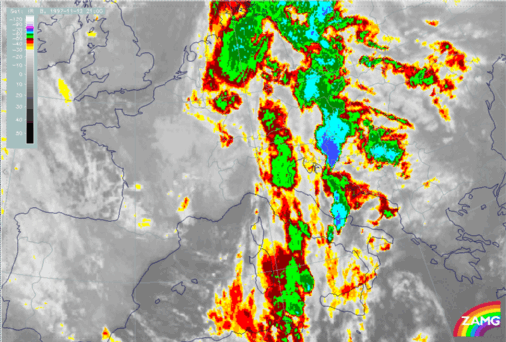
|
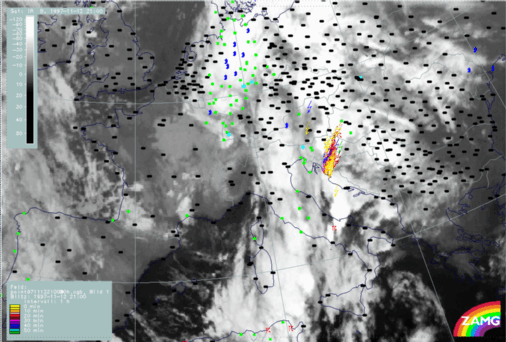
|
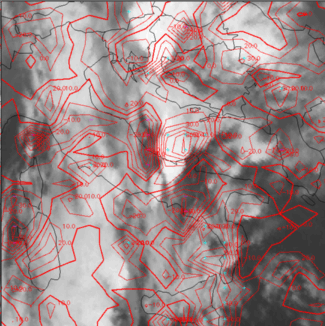
|
|
|
12 November 1997/21.00 UTC - Meteosat IR image; red: mean values of grey shades of cloud development and decay, cyan: cloud development greater
than 30 units, magenta: cloud decay greater than 20 units
|
|
12 November 1997/22.00 UTC - Meteosat IR enhanced image
|
12 November 1997/22.00 UTC - Meteosat IR image; lightning reports
|
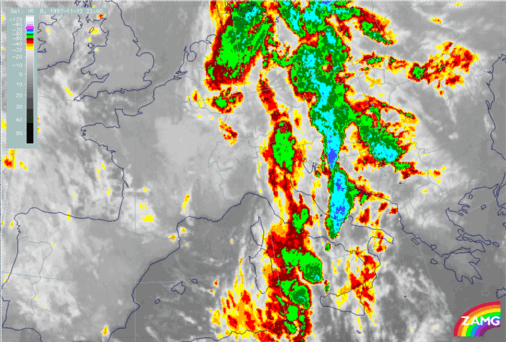
|
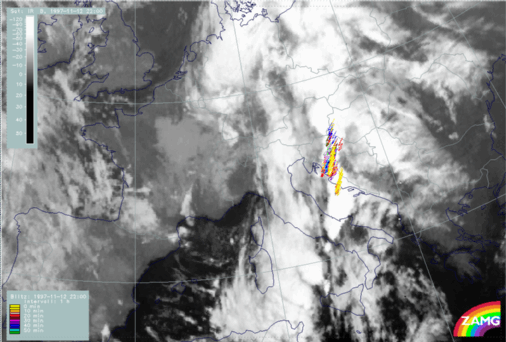
|
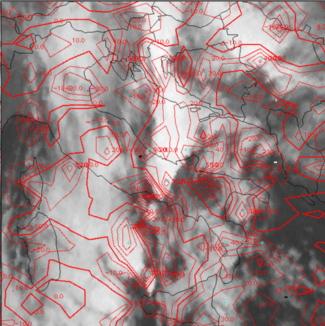
|
|
|
12 November 1997/22.00 UTC - Meteosat IR image; red: mean values of grey shades of cloud development and decay, cyan: cloud development greater
than 30 units, magenta: cloud decay greater than 20 units
|
|
12 November 1997/23.00 UTC - Meteosat IR enhanced image
|
12 November 1997/23.00 UTC - Meteosat IR image; lightning reports
|
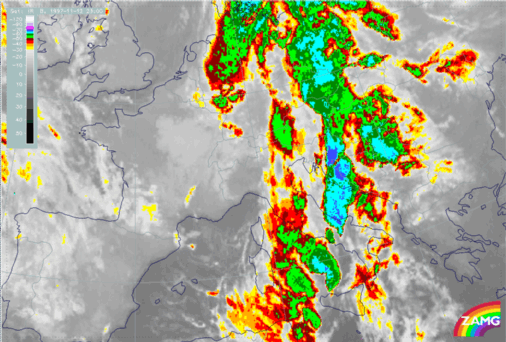
|
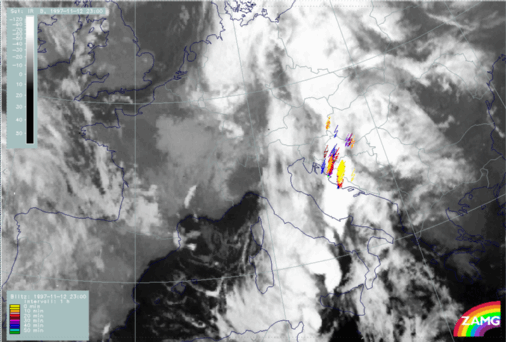
|
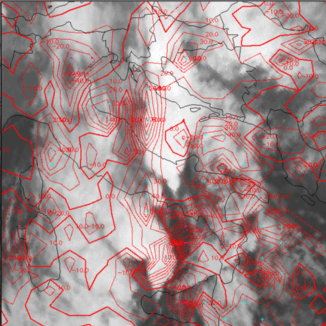
|
|
|
12 November 1997/23.00 UTC - Meteosat IR image; red: mean values of grey shades of cloud development and decay, cyan: cloud development greater
than 30 units, magenta: cloud decay greater than 20 units
|
|
13 November 1997/06.00 UTC - Meteosat IR image; lightning reports
|
13 November 1997/06.00 UTC - Meteosat IR image; lightning reports
|
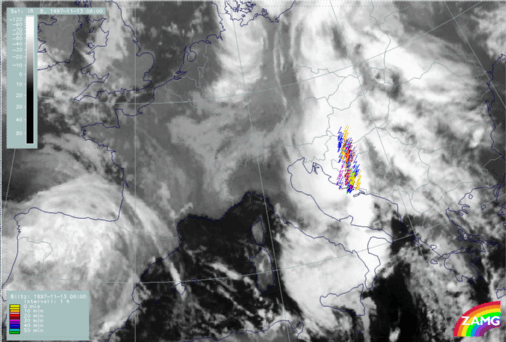
|
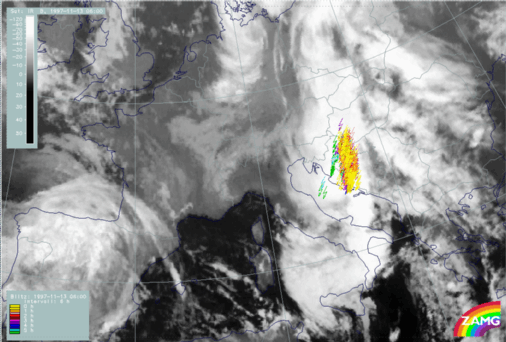
|
Synoptic environment part
13 November 1997/00.00 UTC - Meteosat IR image; weather reports (green: rain and showers, blue: drizzle, cyan: snow, purple: freezing rain, red:
thunderstorm with precipitation, orange: hail, black: no actual precipitation or thunderstorm with precipitation); position of vertical cross sections
indicated
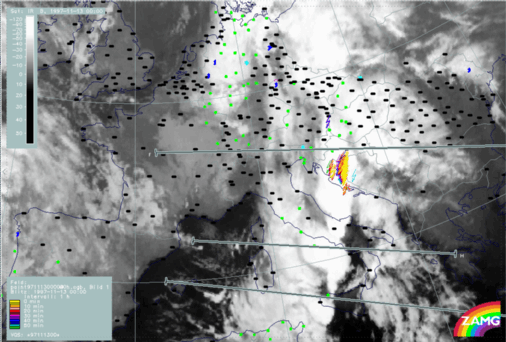
|
13 November 1997/00.00 UTC - Meteosat IR image; cyan: Showalter index 500/850 hPa, lightning reports; position of vertical cross section indicated
|
13 November 1997/00.00 UTC - Meteosat IR image; blue: thermal front parameter (TFP) 500/850 hPa, red: temperature advection 1000 hPa, lightning
reports
|
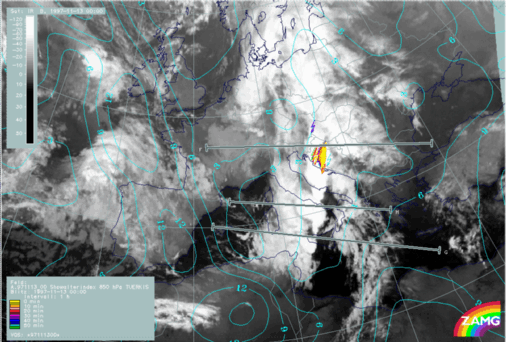
|
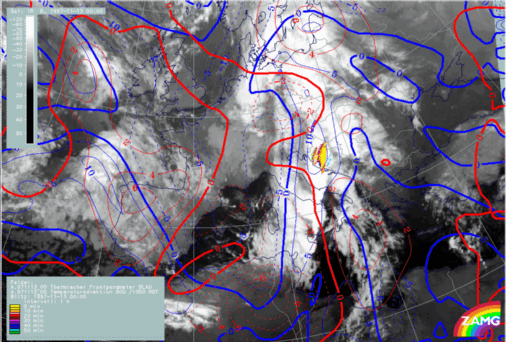
|
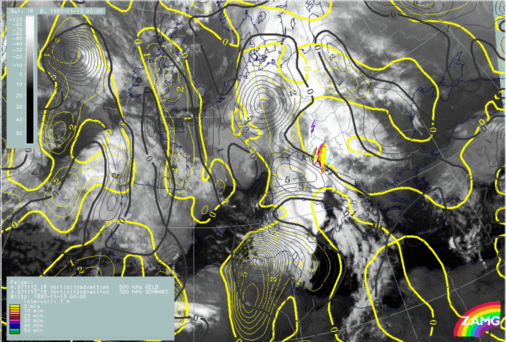
|
|
|
13 November 1997/00.00 UTC - Meteosat IR image; yellow: positive vorticity advection (PVA) 500 hPa, black: positive vorticity advection (PVA) 300 hPa,
lightning reports
|
These differences can also be noticed in the vertical cross sections. The northern vertical cross section R through the Croatian MCS Th3 + Th4 is compared to the southern cross section S across the smaller convective system Th5b west of the WA area.
|
13 November 1997/00.00 UTC - Meteosat IR image; position of vertical cross sections S and R indicated
|
13 November 1997/00.00 UTC - Vertical cross section R; black: isentropes (ThetaE), red thin: temperature advection - CA, red thick: temperature
advection - WA, orange thin: IR pixel values, orange thick: WV pixel values
|
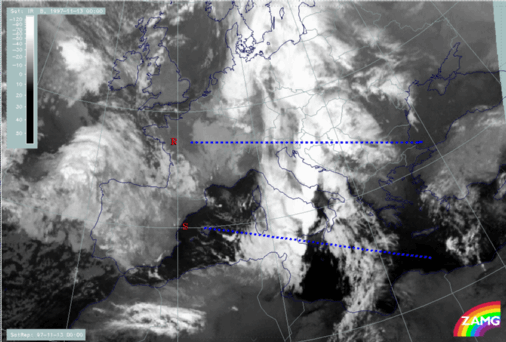
|
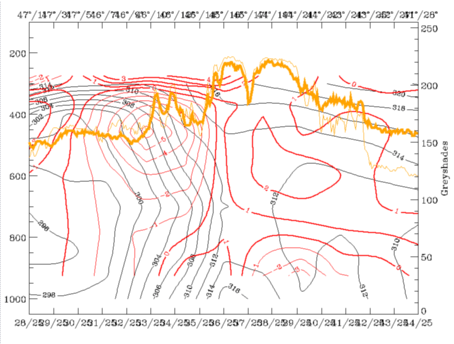
|
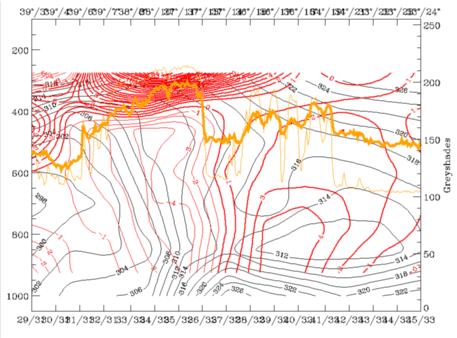
|
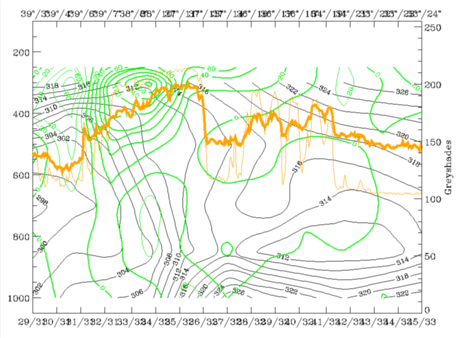
|
|
13 November 1997/00.00 UTC - Vertical cross section S; black: isentropes (ThetaE), red thin: temperature advection - CA, red thick: temperature
advection - WA, orange thin: IR pixel values, orange thick: WV pixel values
|
13 November 1997/00.00 UTC - Vertical cross section S; black: isentropes (ThetaE), green thick: vorticity advection - PVA, green thin: vorticity
advection - NVA, orange thin: IR pixel values, orange thick: WV pixel values
|
|
13 November 1997/00.00 UTC - Vertical cross section R; black: isentropes (ThetaE), magenta thin: divergence, magenta thick: convergence, orange thin:
IR pixel values, orange thick: WV pixel values
|
13 November 1997/00.00 UTC - Vertical cross section S; black: isentropes (ThetaE), magenta thin: divergence, magenta thick: convergence, orange thin:
IR pixel values, orange thick: WV pixel values
|
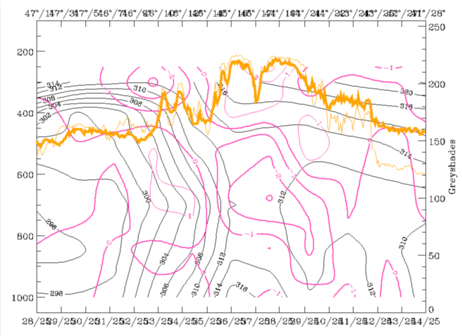
|
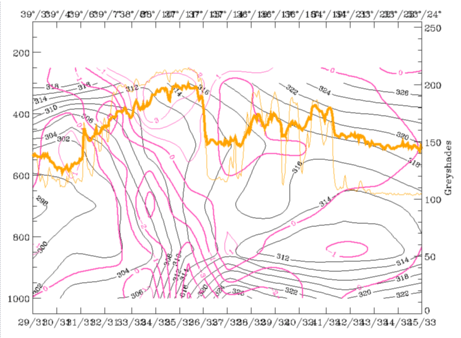
|
|
13 November 1997/00.00 UTC - Vertical cross section R; black: isentropes (ThetaE), orange thin: IR pixel values, orange thick: WV pixel values
|
13 November 1997/00.00 UTC - Vertical cross section S; black: isentropes (ThetaE), orange thin: IR pixel values, orange thick: WV pixel values
|
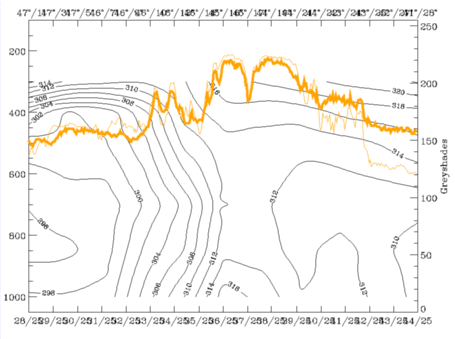
|
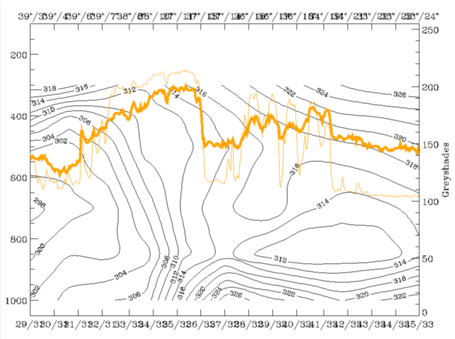
|
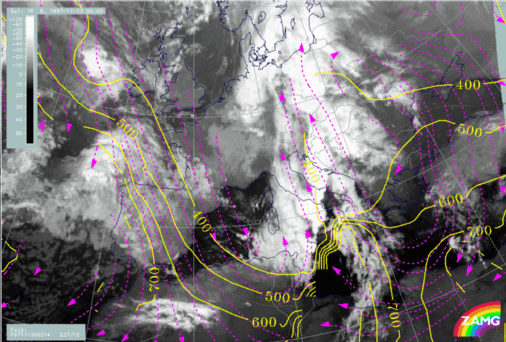
|
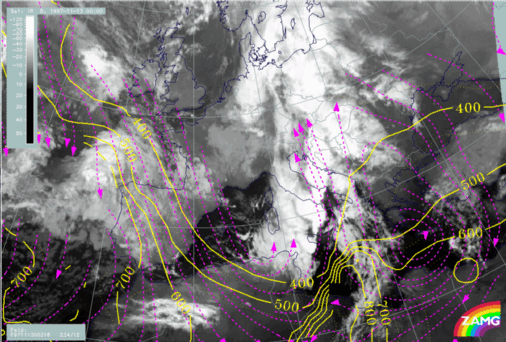
|
|
13 November 1997/00.00 UTC - Meteosat IR image; magenta: relative streams 314K - system velocity 237° 12 m/s, yellow: isobars
|
13 November 1997/00.00 UTC - Meteosat IR image; magenta: relative streams 316K - system velocity 234° 12 m/s, yellow: isobars
|


